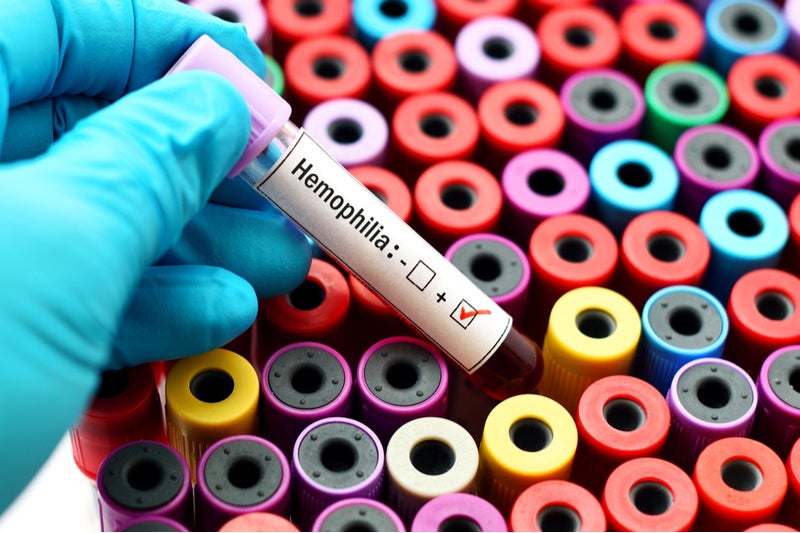In 2018, there were 67,048 diagnosed prevalent cases of haemophilia A and B across the eight major markets (8MM: the US, France, Germany, Italy, Spain, the UK, Japan, and China).
Of those, 30,852 cases or 46.01% were diagnosed to be severe haemophilia, making it the predominant severity across the 8MM.
Diagnosed prevalent cases of haemophilia A and B by severity (men and women) 8MM in 2018

Source: GlobalData © GlobalData
Haemophilia is a rare x-linked hereditary bleeding disorder that results in an inability of the blood to clot normally. This is as a result of ineffective or a lack of sufficient clotting factors in the blood. The inability for blood to clot normally can lead to major internal and external haemorrhaging, often occurring in joints, muscles, soft tissues and mucosal membranes, as a result of internal or external trauma. Hemophilia A and B are classified into three severity types ranging from mild to severe, with the major difference being the extent to which the uncontrolled bleeding occurs and where in the body it occurs.
In 2018, GlobalData epidemiologists forecast that the US, Germany, Italy, Japan, and China all had a majority of the diagnosed prevalent cases of haemophilia classified as severe, while only France, Spain, and the UK had more mild cases than severe. Severe haemophilia is defined as having less than 1% of normal blood clotting factor levels in the blood; often bleeding is spontaneous and if occurring internally may go unnoticed, which can lead to major health risk, while those with mild haemophilia may never experience a major bleeding episode. Accurately diagnosing the severity of haemophilia an individual can prove to be vital in regards to the long-term monitoring and care of the individual.

US Tariffs are shifting - will you react or anticipate?
Don’t let policy changes catch you off guard. Stay proactive with real-time data and expert analysis.
By GlobalData




